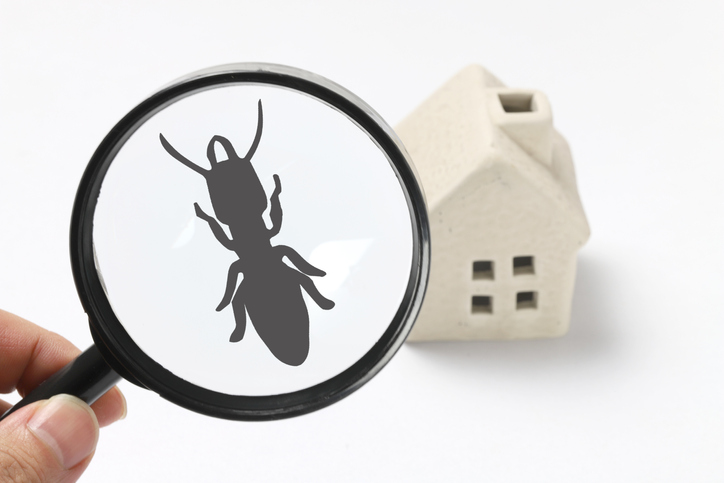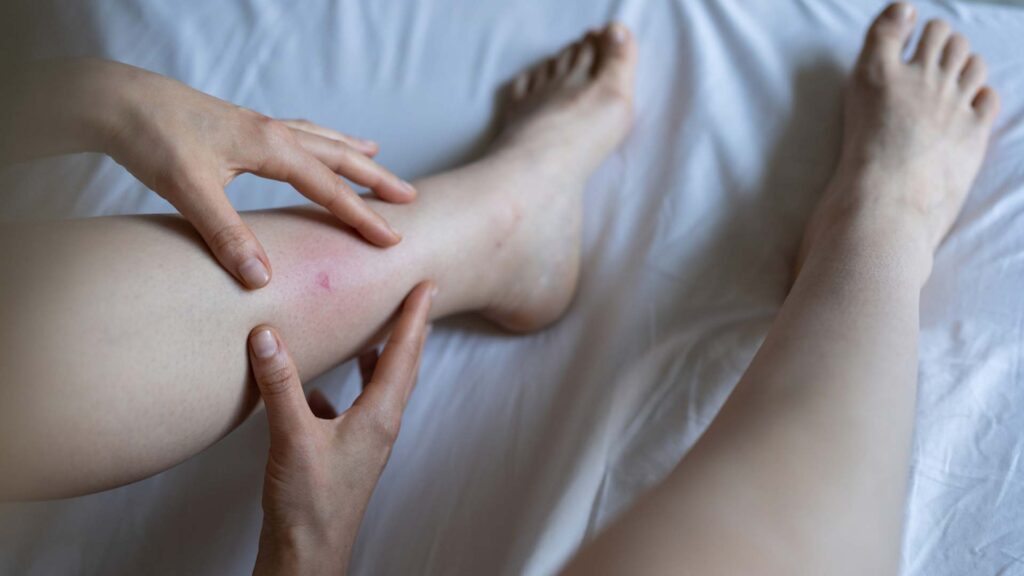How to Identify Bed Bugs vs. Other Bugs That Look Similar
Bed bugs, often confused with other household insects, can be identified by their small, reddish-brown, oval, and flat bodies, about the size of an apple seed. Unlike carpet beetles or spider beetles, bed bugs feed on human blood and leave bites in a line or cluster on exposed skin. Signs of an infestation include blood spots on sheets, a sweet musty odor, and excrement spots in mattress seams. Understanding these distinct characteristics is crucial for homeowners to correctly identify and effectively deal with bed bug infestations.

Unmasking the Intruder: Distinguishing Bed Bugs from Look-Alikes
In the stillness of the night, when the world seems at peace, a tiny, often unseen intruder can turn our homes, particularly our bedrooms, into a battleground. This intruder is not just a mere annoyance; it’s a bed bug, an insidious pest that has been making a disturbing comeback in homes, hotels, and even public transportation across the globe. The resurgence of these pests in our living spaces is not just a matter of discomfort but a significant concern for home safety and human health.
Bed bugs, once nearly eradicated in developed countries, have re-emerged as a common household problem. This resurgence is often attributed to increased international travel, urbanization, and the pests’ growing resistance to conventional insecticides. Their presence in our homes is a complex issue, intertwining aspects of public health, psychology, and pest management.
For homeowners, the challenge is twofold: identifying these pests correctly and understanding their impact on our lives. Misidentification is common, as bed bugs are often mistaken for other insects like fleas, carpet beetles, or spider beetles. This confusion can lead to ineffective pest control measures, allowing the problem to escalate.
The bed bug, Cimex lectularius, is a master of stealth and survival. These small, reddish-brown insects have adapted to exclusively feed on blood, particularly human blood, making our homes their ideal habitat. Their ability to hide in the smallest of crevices and their nocturnal feeding habits make them elusive adversaries.
The impact of bed bugs extends beyond physical bites. Their presence can cause significant psychological distress, including anxiety, paranoia, and sleep disturbances. The social stigma associated with bed bugs can lead to isolation and embarrassment, further exacerbating the psychological toll.
As we delve deeper into the world of these tiny pests, it’s crucial to arm ourselves with knowledge. Understanding the differences between bed bugs and their look-alikes, recognizing the signs of an infestation, and knowing the steps to effectively manage and prevent these pests are essential skills for today’s homeowners. This article aims to shed light on these aspects, offering a blend of technical information and practical advice to navigate the challenge of bed bugs in our modern world.
Common Imposters: Unveiling the Look-Alikes
In the quest to identify bed bugs, homeowners often encounter a range of insects that bear a deceptive resemblance. These common imposters can be mistaken for bed bugs, leading to unnecessary panic or misdirected control efforts. Understanding these look-alikes is essential for accurate identification and appropriate action.
- Carpet Beetles: Unlike bed bugs, carpet beetles are not blood feeders. They are attracted to natural fibers and can often be found in carpets, woolen fabrics, and stored clothing. Carpet beetles are rounder and have distinctive, mottled patterns of white, brown, and yellow scales. They do not leave the telltale bite marks associated with bed bugs.
- Spider Beetles: These beetles mimic the bed bug’s shape but are more globular. Spider beetles vary in color from reddish-brown to black and prefer to feast on grains, cereals, and dried food products. Unlike bed bugs, they are not parasites of humans or animals and are typically found in pantries or areas where food is stored.
- Fleas: Commonly found on pets, fleas are small, dark, and wingless but have the unique ability to jump long distances. They bite humans and animals, causing itchy, red spots. Fleas are more likely to be distributed across the body or on the lower legs, contrasting with the linear bite patterns of bed bugs.
- Booklice: Often mistaken for bed bug nymphs due to their small size, booklice feed on mold and fungi, particularly in humid environments. They are typically found in old books, papers, or damp areas and do not bite humans. Booklice are smaller and more slender than bed bugs, with a more pronounced head.
- Bat Bugs: Closely related to bed bugs, bat bugs feed on the blood of bats. In the absence of their preferred host, they may bite humans. They are nearly identical to bed bugs but can be distinguished by an expert through microscopic examination of their hair length and patterns.
- Swallow Bugs: Similar to bat bugs, swallow bugs are parasites of cliff swallows and can also infest homes. They resemble bed bugs but are more adapted to living in bird nests. Like bat bugs, distinguishing them from bed bugs requires expert analysis.
Misidentifying these imposters as bed bugs can lead to ineffective pest control methods, unnecessary expenses, and prolonged infestations of the actual pest. Accurate identification is crucial for implementing the correct control strategy. In many cases, consulting with a pest management professional can provide clarity and ensure that the real culprit is addressed effectively.
Quick Identification Guide: Bed Bug vs. Common Look-Alikes
Bed Bug
- Size: 4-5mm, apple seed-sized.
- Shape: Oval, flat body.
- Color: Brownish, turning redder after feeding.
- Bite Marks: Linear or clustered patterns on skin.
- Habitat: Mattress seams, furniture crevices.
Carpet Beetle
- Size: 1.7-3.5mm.
- Shape: Round, more dome-shaped.
- Color: Varied, often with patterns.
- Bite Marks: None, they don’t bite humans.
- Habitat: Carpets, wardrobes, feeding on fabric.
Spider Beetle
- Size: 1.5-3.5mm.
- Shape: Rounded, spider-like.
- Color: Reddish-brown to black.
- Bite Marks: None, they don’t bite humans.
- Habitat: Pantries, feeding on grains.
Flea
- Size: 1.5-3.3mm.
- Shape: Small, narrow.
- Color: Dark brown.
- Bite Marks: Random bites, often around ankles.
- Habitat: On pets, in carpets.
Understanding these common bed bug look-alikes empowers homeowners to respond appropriately, ensuring peace of mind and a healthier home environment.
Bed Bug Identification vs. Common Look-Alikes
| Feature | Bed Bugs (Cimexlectuus) | Carpet Beetles | Spider Beetles | Fleas |
|---|---|---|---|---|
| Appearance | Small, oval, flat; reddish-brown | Round, varied colors; often with patterns | Rounded body; shiny, spider-like | Small, dark, and wingless; long hind legs |
| Size | 5-7mm (adults); apple seed-sized | 1.5-4mm | 1.5-3.5mm | 1.5-3.3mm |
| Feeding Habits | Feed on human blood | Feed on fabrics, hair, and dead insects | Prefer grains, cereals, and flour | Feed on blood of humans and pets |
| Bite Patterns | Bites in lines or clusters on exposed skin | Do not bite; cause skin irritation | Do not bite | Bites often on ankles and legs; random pattern |
| Habitat | Mattresses, bed frames, furniture | Carpets, closets, furniture | Pantries, kitchens | Pets, carpets, human bedding |
| Signs of Presence | Blood spots on sheets, musty odor, excrement in seams | Damage to fabrics, shed skins | Small holes in food packaging | Pets scratching, small dirt-like droppings |
| Health Impact | Allergic reactions, skin infections, psychological distress | Allergic reactions to shed skins | Generally harmless | Can transmit diseases to pets; cause itching and discomfort |
The Bed Bug: A Closer Look
Bed bugs, the tiny, nocturnal creatures that have become a growing concern in households worldwide, warrant a closer examination. Understanding their biology, behavior, and lifecycle is essential for homeowners grappling with these elusive pests.
Scientifically known as Cimex lectularius, bed bugs are part of the Cimicidae family. These insects are small, with adults typically measuring 5 to 7 millimeters in length. Their bodies are oval-shaped and flattened, an adaptation that allows them to hide in incredibly narrow crevices, evading detection. The color of these pests ranges from a light brown to a reddish-brown, deepening in hue after they have fed.
Bed bugs are hematophagous, meaning they exclusively feed on blood. Human blood is their preferred choice, making our homes, particularly our beds, ideal habitats for them. They are mostly active at night, which coincides with our sleeping hours. A bed bug can feed for about 3 to 10 minutes, often going unnoticed due to the anesthetic properties in their saliva. After feeding, they retreat to their hiding places to digest the meal, mate, and lay eggs.
The lifecycle of a bed bug includes several stages: egg, nymph, and adult. The female bed bug lays white, oval eggs about 1mm in length, often in cracks and crevices. These eggs hatch in about a week, giving rise to nymphs, which look like miniature versions of adults. Nymphs undergo five molting stages, requiring a blood meal each time before they mature into adults. This process can take anywhere from five weeks to several months, depending on environmental conditions like temperature and availability of food.
One of the reasons for the bed bug’s resurgence is its remarkable adaptability. They can survive for several months without feeding, lying dormant in hidden locations within homes. This resilience makes them particularly challenging to eradicate. Additionally, bed bugs have shown an increasing resistance to common pesticides, further complicating control efforts.
Identifying a bed bug infestation can be challenging. These pests are adept at hiding, and their bites can be mistaken for other insect bites.

Common signs include small blood stains on bedding, a sweet musty odor (from their scent glands), and dark spots of excrement on mattresses or furniture. Spotting live bed bugs is a definitive sign, but due to their elusive nature, this is often not easy.
The bed bug, a seemingly small and insignificant insect, is a complex creature with unique biological and behavioral traits. Their ability to hide, survive long periods without food, and rapidly reproduce makes them formidable pests in our homes. Understanding these aspects is crucial for homeowners and pest control professionals alike in the ongoing battle against bed bug infestations.
Health Implications of Bed Bugs and Their Imposters
Bed bugs and their look-alikes, while often mistaken for one another, can have distinctly different impacts on human health. Understanding these implications is crucial for homeowners, as it informs both the urgency and methods of dealing with these pests.

Bed bugs, known for their itchy, red bites, primarily affect human health through their feeding habits. These bites often result in small, red welts that can cause discomfort and itching. However, the impact of bed bugs extends beyond physical symptoms:
- Allergic Reactions: Some individuals may experience severe allergic reactions to bed bug bites, necessitating medical attention.
- Secondary Infections: Excessive scratching can lead to skin infections like impetigo, ecthyma, and lymphangitis.
- Sleep Disturbances: The presence of bed bugs can cause significant anxiety, leading to sleeplessness and insomnia.
- Mental Health Impact: Chronic infestations have been linked to anxiety, stress, and other psychological effects, impacting overall well-being.
Carpet beetles, often mistaken for bed bugs, do not bite humans. However, they can still impact health:
- Skin Reactions: The tiny hairs on carpet beetle larvae can irritate the skin, causing a rash that resembles bed bug bites.
- Allergic Responses: Some individuals may develop allergic reactions to the shed skins and hairs of carpet beetle larvae.
- Respiratory Issues: Inhaling particles from carpet beetles can exacerbate asthma and other respiratory conditions.
Spider beetles, another common imposter, are generally harmless to humans. They do not bite or cause health issues directly. However, their presence in large numbers can be distressing and may indicate other underlying hygiene issues.
Fleas, while easily distinguishable from bed bugs, are often found in the same environments:
- Bites and Itching: Flea bites, primarily around the ankles, can cause intense itching and discomfort.
- Disease Transmission: Unlike bed bugs, fleas can transmit diseases like typhus and plague, though such cases are rare.
- Pets at Risk: Fleas commonly infest pets, leading to allergic dermatitis, tapeworms, and anemia in severe cases.
While bed bugs and their look-alikes vary in their health implications, they all require attention. Bed bugs, with their potential for physical and psychological impact, are particularly concerning. Carpet beetles and spider beetles, though less harmful, can still cause discomfort and allergic reactions. Fleas, with their ability to bite and transmit diseases, pose a different set of health risks. Homeowners should be vigilant in identifying and addressing these pests to maintain a healthy living environment.
The Hidden Impact: Bed Bugs and Your Health
Physical Health
Bed bug bites can lead to allergic reactions, itching, and secondary skin infections.
Mental Health
The presence of bed bugs can cause anxiety, stress, and sleep disturbances.
Prevention
Regularly wash and heat-dry bed linens and curtains.
Treatment
Consult a dermatologist for bite reactions and a mental health professional for anxiety or sleep issues related to infestations.
Awareness
Educate family members about identifying and preventing bed bug infestations.
Case Study: The Urban Resurgence
A 2019 study in the Journal of Medical Entomology highlighted the urban spread of bed bugs. In cities like New York and Los Angeles, increased travel, resistance to pesticides, and lack of public awareness have fueled their comeback. This resurgence underscores the need for public education and effective pest control strategies.
The resurgence of bed bugs in modern living spaces is more than a mere inconvenience; it’s a call to action for homeowners and communities alike. These tiny invaders, often mistaken for other household insects, present unique challenges in both identification and eradication. Understanding their characteristics and behavior is not just a matter of curiosity but a crucial step in combating these resilient pests.
Bed bugs, with their nocturnal habits and preference for human blood, are not just pests that cause physical discomfort. Their presence can lead to a range of psychological stresses, including anxiety and sleep disturbances. The psychological impact of a bed bug infestation is often as significant as the physical one, affecting the quality of life and peace of mind.
The challenge is compounded by the bed bug’s remarkable adaptability and resistance to common pesticides. This resilience calls for a more sophisticated approach to pest control, one that combines scientific understanding with practical home management strategies. Homeowners must become vigilant sentinels, armed with knowledge and proactive measures.
Professional extermination remains a cornerstone in the battle against bed bugs. However, this alone is not a panacea. Integrating professional services with home-based strategies like regular vacuuming, heat treatments for bedding, and meticulous inspection of luggage after travel, forms a more robust defense. Sealing cracks and crevices in the home denies these pests their hiding places, further reducing the risk of infestation.
-
Best OverallSave $50 on your first recurring service today with code GET50
-
Best for TermitesSave $50 on pest control services with code SAVE50 at checkout
-
Best for Bed BugsGet a free estimate on pest control services for your home
-
Best for Wildlife RemovalCall For A Fast & FREE Phone Estimate Today
-
Best for Natural TreatmentGet $100 Off Your Termite Treatment Service
Safeguarding Your Home: Preventing Bed Bug Infestations
Public education plays a pivotal role in this fight. The spread of bed bugs is not just an individual concern but a community issue. Increased awareness about identification, prevention, and treatment can significantly reduce the spread and impact of these pests. Sharing knowledge and experiences can empower communities, making them less vulnerable to infestations.
As urban environments continue to grapple with the bed bug resurgence, the need for ongoing research and development of new control methods becomes evident. The collaboration between scientists, pest control professionals, and the public is essential in evolving our strategies to stay one step ahead of these adaptable pests.
The war against bed bugs is ongoing and multifaceted. It demands a combination of scientific knowledge, professional expertise, and proactive home management. As these pests continue to thrive in our urban landscapes, our awareness, vigilance, and collective action become indispensable tools. By embracing these challenges head-on, homeowners can reclaim their spaces, ensuring their homes remain sanctuaries of comfort and safety, free from the unwelcome intrusion of bed bugs.
FAQs
How can I tell if I have bed bugs and not another type of insect?
Bed bugs are small, reddish-brown, and oval-shaped. They are about the size of an apple seed. Unlike other insects, they leave behind specific signs like blood spots on sheets, a sweet musty odor, and excrement spots in mattress seams. Their bites often appear in a line or cluster on exposed skin.
Are bed bug bites different from other insect bites?
Yes, bed bug bites are unique in their pattern. They typically appear in a line or cluster and are usually found on body parts exposed while sleeping. In contrast, flea bites are more random and often occur around the ankles.
Can bed bugs transmit diseases?
No, bed bugs are not known to transmit diseases. However, their bites can cause allergic reactions, skin infections, and psychological distress, such as anxiety and insomnia.
Why are bed bugs so hard to get rid of?
Bed bugs are particularly resilient due to their ability to hide in tiny crevices, their increasing resistance to pesticides, and their rapid breeding cycle. Eradication often requires professional intervention and a comprehensive approach, including heat treatments and vigilant cleaning.
What should I do if I suspect a bed bug infestation?
If you suspect a bed bug infestation, it’s advisable to contact a professional exterminator. In the meantime, you can start by washing all bedding and clothing in hot water, vacuuming thoroughly, and sealing any cracks or crevices where bed bugs might hide.
How do bed bugs spread from one place to another?
Bed bugs can hitch a ride on luggage, clothing, furniture, and other items. They are often spread in multi-unit environments like apartments and hotels, and through travel.
Are there any natural remedies to prevent or get rid of bed bugs?
While natural remedies like essential oils or diatomaceous earth are sometimes suggested, their effectiveness is limited. The most reliable method of eradication is a combination of professional pest control services and diligent home cleaning practices.
Can bed bugs live in my hair or on my body?
Unlike lice or ticks, bed bugs do not live on humans. They might hitch a ride on clothing, but they prefer to reside in mattresses, furniture, and other hidden areas close to where people sleep.
How long can bed bugs survive without feeding?
Bed bugs can survive for several months without feeding, making them particularly hardy pests. This trait contributes to their persistence even in unoccupied spaces.
What are the first steps I should take if I find bed bugs in my home?
Begin by cleaning and decluttering the area to reduce hiding spots. Wash all bedding and clothing in hot water and vacuum thoroughly. Encase mattresses and box springs with bed bug-proof covers and consider professional pest control services for a comprehensive approach.









